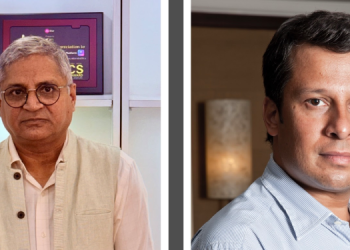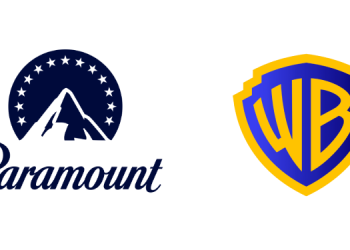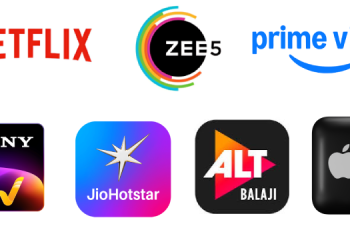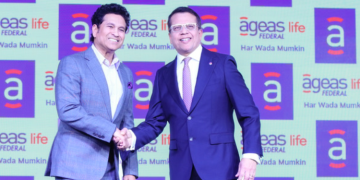Reliance Industries, led by Mukesh Ambani has strategically expanded its major presence in the media and entertainment sector through several investments and acquisitions. The notable one among them is the acquisition of Network18 Media & Investments Ltd through its Independent Media Trust back in 2014 for around Rs 4000 crore. Network18 operates a diverse portfolio of channels across news, lifestyle, and entertainment genres. The company operates channels in various regional languages under the News18 brand and has a franchise agreement with CNN Worldwide for CNN-News18, also the CNBC-TV18 channels in India.
Viacom18 Media which is another subsidiary of the Network18 group is the parent company for nearly 50 channels and operates through the brands of Colors, MTV, Nickelodeon, VH1, and Comedy Central. Viacom18 has also launched an over-the-top (OTT) platform known as Voot.
Apart from these, the digital arm of Reliance has significantly invested in the technology and media space. Further solidifying the company’s space in the cable and broadband segment – Jio Platforms acquired stakes in Den Networks and Hathway Cable in 2018.
According to media reports in 2024, Reliance and Disney are in talks to merge their India media businesses, with Reliance set to pick up a majority stake valuing Disney’s domestic business at $3.5 billion.
The reports also suggested that Reliance Industries and Walt Disney Co. are finalizing a merger to create India’s largest media entity, with Viacom18 as major shareholder. Media reports on the proposed merger also said Reliance Industries aims to retain majority shareholding in the merged entity with 51 pc holding leaving the remaining 49 pc with Disney. The controlling stake is likely to be acquired by RIL in a cash deal and the immediate capital investment is seen at USD 1-1.5 billion.
A few days back, reports emerged that Reliance Industries is in talks to acquire a 29.8 pc stake in Tata Play with an objective to expand its presence in the television distribution sector in India. This mergers and acquisitions has triggered a debate in the industry with people echoing concern on possibilities of content monopoly with distribution heft.
“If a major player like Reliance Industries dominates the Indian media space subsequently it could lead to concentration of power which in turn affects the market dynamics. This dominance will lead Reliance controlling pricing, influence content creation, and possibly limit the consumer choices,” notes an industry watcher.

Pankaj Krishna, Founder & CEO of Chrome Data Analytics and Media shares a similar opinion. “This move could indeed raise concerns about the consolidation of content and distribution power, potentially leading towards a scenario of content monopoly. Such developments highlight the need for careful monitoring and regulatory oversight to ensure fair competition and consumer choice in the media and entertainment industry,” he said.
Karan Taurani notes that there is no content monopoly.
“We have to look at market share numbers. The market share of Reliance and Disney is around 40-45 pc on Linear TV and on Digital or OTT space-it is 35-40 pc, if there is a market share of beyond 50 pc then CCI and TRAI will monitor this genre wise and try to curtail the number of channels and platforms wherever the numbers are big. On the distribution side, reliance acquired Hathway and Den and acquisition of stakes in Tata Play is also not a monopolistic approach. We are moving into a scenario where the distribution clout will be in favor of Reliance- at one end they have got smartphones and, at another end, they have got wire broadband, air fiber. They have got the support of MSO operators. They have got a presence whether it is small or big in each of these distribution spaces and that’s how they want to scale up. In terms of aggregation, Tata Play could have been a competitor to Jio. I believe they are trying to make sure that they have a say before any other large players scale up a complete shift there. That’s the broader intent- to have a presence in each of these segments as far as distribution is concerned,” Taurani adds.
“With IPL they have got premium content in hand and Jio is the platform. Eventually, they need to explore the suite of Tata Play as an aggregator, they have got MSOs, they have their own Telecom. Hence, it has to go large scale as they have spent big money on content. No part of the distribution ecosystem is untouched and that’s how Reliance is trying to make inroads in each of these segments,” Taurani notes.

Vivek Gupta, MD- Research at Ipsos India notes, “Reliance in addition to Jio Fiber also has a cable distribution strength via Den and Hathway cable in which it owns a substantial stake. With this strategic stake acquisition in Tata Play, Reliance will have control on DTH, cable and Fiber play as also with content as it has managed by having both TV and digital rights to IPL with Disney acquisition which is a major festival for Indians given that cricket is a religion. With this they will have control at both end with advertisers as well as with the consumer and the viewers.”
Is TRAI, MIB and CCI monitoring
“The governing authorities which are watchdogs can monitor but cannot help create a strong competition for reliance as they are already struggling with cancellation of the proposed zee Sony merger. Most cable companies like Siti cable which is owned by zee being in deep red and other DTH players still generate enough profit due to price caps suggested by TRAI as also regulated environment on channel bundling. With this the content generators may be next on Reliance crosshairs as they already own a sizable stake in Balaji telefilm and Alt Balaji and may next look for other OTT acquisitions to complete their picture,” notes Gupta.
“The maneuvers undertaken by Reliance Industries in the media and entertainment sector signal a strategic and calculated effort to consolidate influence. The reported aim of Reliance Industries to retain a majority shareholding in the merged entity raises red flags in terms of content diversity, competition, and consumer choice. A dominant player with extensive control over various channels and platforms may shape the narrative and limit alternatives for the audience. In this evolving landscape, regulatory bodies such as TRAI, CCI, and MIB assume critical roles. Their vigilant oversight is essential to ensure that market forces remain balanced, preventing any undue dominance that could lead to a content monopoly. Striking a delicate equilibrium between business growth and maintaining a vibrant, competitive media ecosystem is imperative for sustaining a healthy industry that serves the interests of both businesses and consumers,” observes an industry expert.
“Regarding regulatory oversight, it is likely that TRAI, MIB, and CCI are monitoring these developments closely, especially given the potential implications for market competition and consumer choice,” said Krishna.
“These regulatory bodies play vital roles in ensuring fair practices and preventing monopolistic tendencies in the media and entertainment industry. However, the extent of their involvement and any subsequent actions would depend on the specific details and implications of the proposed transaction,” he surmised.

















